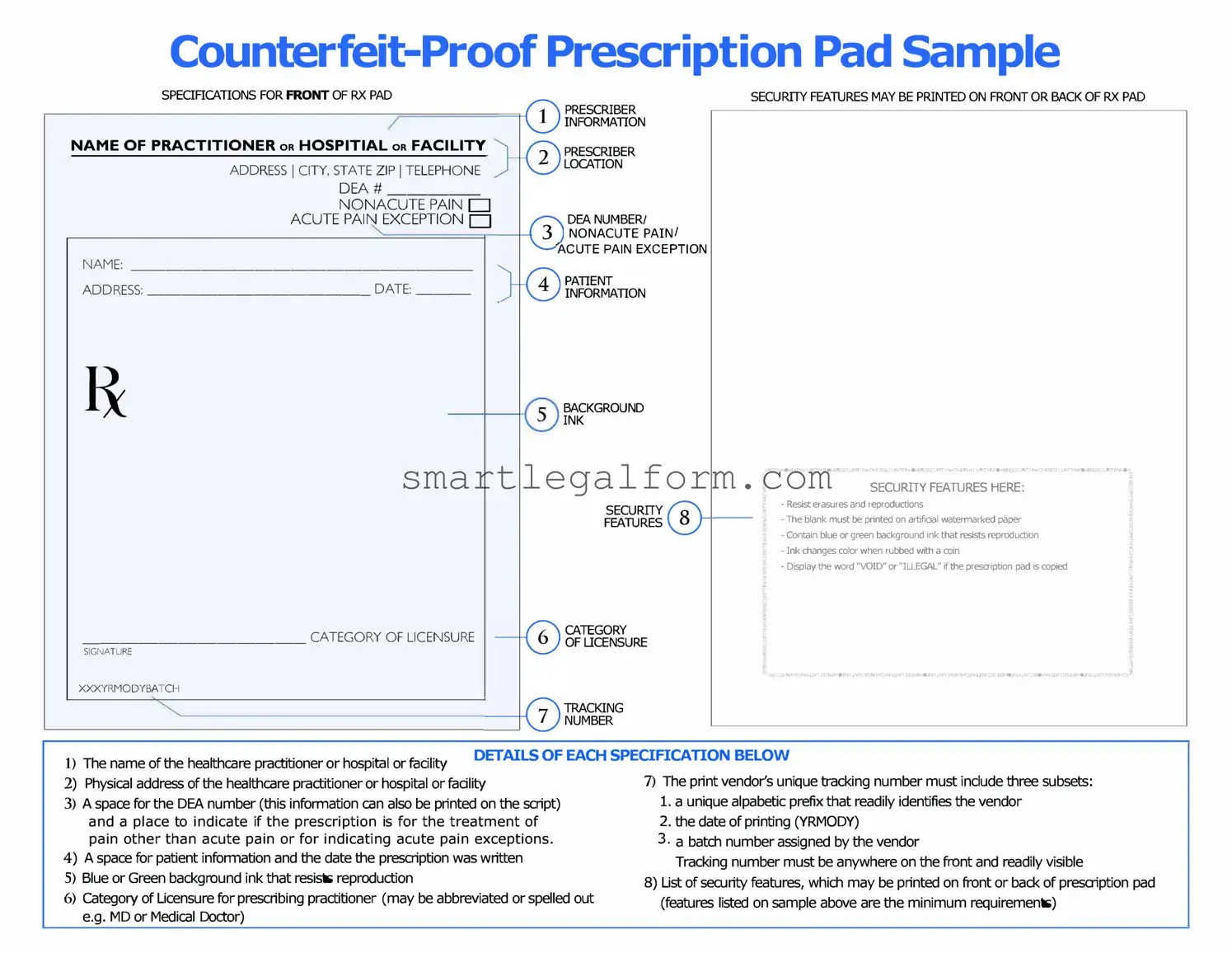Filling out a Prescription Pad form may seem straightforward, but many individuals make common mistakes that can lead to confusion or even jeopardize patient safety. One prevalent error is the omission of critical patient information. When a patient's name, date of birth, or contact details are missing, it can create significant hurdles for pharmacists and healthcare providers. Ensuring that all relevant patient data is included is essential for effective communication and care.
Another frequent mistake is the incorrect dosage or frequency of medication. A prescription that states an inaccurate dosage can have serious implications for a patient's health. For example, prescribing too much of a medication can lead to toxicity, while too little may render the treatment ineffective. It is crucial for prescribers to double-check these details before finalizing a prescription.
Additionally, many people fail to specify the medication's formulation. Whether it’s a tablet, liquid, or injection, the formulation can affect how the medication is administered and absorbed by the body. Without this information, pharmacists may not be able to provide the correct medication, leading to delays in treatment.
Furthermore, neglecting to include refills is another common oversight. Patients may need ongoing medication, and without specifying the number of refills, they could find themselves without necessary treatment. Clearly indicating the number of refills can help ensure that patients have continuous access to their medications.
Finally, a lack of clarity in handwriting can cause significant issues. Illegible handwriting can lead to misunderstandings regarding medication names, dosages, or instructions. This emphasizes the importance of clear and legible writing on the Prescription Pad form to prevent any potential errors in patient care.

